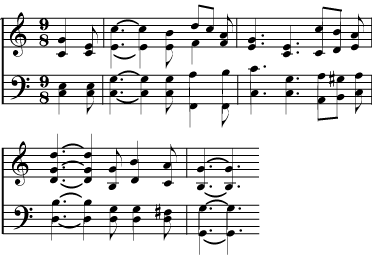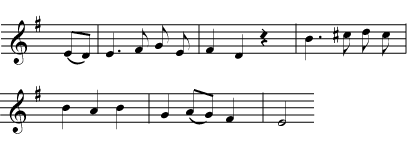| << Chapter < Page | Chapter >> Page > |
The best practice for transposing is to transpose a piece you know well into a new key.
Play the part you have transposed; your own ears will tell you where you have made mistakes.
Before you can begin transposing, you must decide what your new key will be. This will depend on why you are transposing, and what kinds of vocalists and instrumentalists you are working with.
If you are trying to accomodate singers, your main concern in choosing a key is finding their range . Is the music you are working with too high or too low? Is it only a step too high, or does it need to be changed by a third or a fifth? Once you determine the interval needed, check to make certain this will be a comfortable key for your instrumentalists.
A church choir director wants to encourage the congregation to join in on a particular hymn. It is written in four parts with the melody in the soprano part, in a range slightly too high for untrained singers. The hymn is written in the key of E flat. Lowering it by a minor third (one and a half steps) will allow the congregation to sing with gusto.


An alto vocalist would like to perform a blues standard originally sung by a soprano or tenor in B flat. She needs the song to be at least a whole step lower. Lowering it by a whole step would put it in the key of A flat. The guitar, bass, and harmonica players don't like to play in A flat, however, and the vocalist wouldn't mind singing even lower. So the best solution is to lower it by a minor third , and play in the key of G.


You're accompanying a soprano who feels that this folk tune in C minor is too low for her voice. The guitar player would prefer a key with no flats and not too many sharps.

Transposing up a major third , to E minor, puts the song in a better range for a soprano, with a key signature that is easy for guitars.

Transposing instruments are instruments for which standard parts are written higher or lower than they sound. A very accomplished player of one of these instruments may be able to transpose at sight, saving you the trouble of writing out a transposed part, but most players of these instruments will need a transposed part written out for them. Here is a short list of the most common transposing instruments. For a more complete list and more information, see Transposing Instruments .

Notification Switch
Would you like to follow the 'Understanding basic music theory' conversation and receive update notifications?